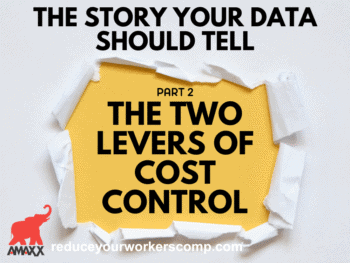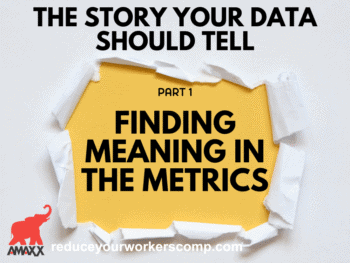Using Cost-Control Calculators to Reduce Workers' Comp Costs In Part One of our look at ever-increasing workers' compensation costs, we looked at how costs are rising and the importance of having a risk manager obtain the support of senior management, employees and physicians to put in place a holistic program. The next step is then how to get started on putting such a program in place, removing the fears management may have because the process itself is viewed as too difficult or expensive. In order to get the ball rolling, note that the financial impact of workers' comp can be viewed by using the Workers' Comp Calculator http://www.ReduceYourWorkersComp.com/calculator.php to demonstrate how much in EBITA (Earnings Before Interest, Taxes and Amortization) or sales it requires to replace the cost of workers' comp insurance losses for your company's bottom line. When it comes to obtaining management backing, remember that you must demonstrate how the financial impact of workers' comp costs impact business operations and also how to rectify the problem. Be sure to do your research prior to going to management. To demonstrate how workers' comp impacts the bottom line, compare the cost of workers' comp to a meaningful metric in your given industry, using the follow suggestions: 1-For example, if you are in the hotel industry, compare your losses to the number of hotel rooms required to be sold to replace the cost of workers' comp losses on the bottom line. If you are part of the transportation industry, compare your losses to miles required to be paid for to replace the cost of these losses. Should you be in the entertainment industry, calculate the number of entrance fees needed to pay for the cost of workers' comp, etc. 2- Or, if every 5th day goes to replace those sales, use a calendar and place a huge red "X" on every 5th calendar day to emphasize your point. 3- Or, if the sales of one of 10 company divisions go to paying for workers' comp, institute icons for all 10 divisions on a map and place a big red "X" over the 10th division paying for workers' comp. 4- Get with your team to comprise a metric that will hit home with your management. 5- Determine the cost of an average claim, along with a large claim, and then convert these to the overall cost to replace that money on the bottom line. 6- Do likewise with your TOTAL INCURRED losses for one year and for all outstanding claims. Using this gross amount will put the total problem in proportion. Editor's Note: Look for how to calculate the financial burden of having too many employees out of work in the next installment. Author: Rebecca Shafer, J.D. consults for mid-market and national accounts focusing on project management, risk management assessments, data review, benchmarking, and development of Workers' Compensation and Injury Management Programs. Projects focus on development of training and education programs, document design, evaluation and integration of insurance claims administration and TPA services. Contact her are: RShaferB@ReduceYourWorkersComp.com We are accepting articles. Contact us at: Info@WorkersCompKit.com.
Do not use this information without independent verification. All state laws vary. You should consult with your insurance broker or agent about workman’s comp issues. ©2009 Amaxx Risk Solutions, Inc. All rights reserved under International Copyright Law. If you would like permission to reprint this material, contact Info@WorkersCompKit.com
















